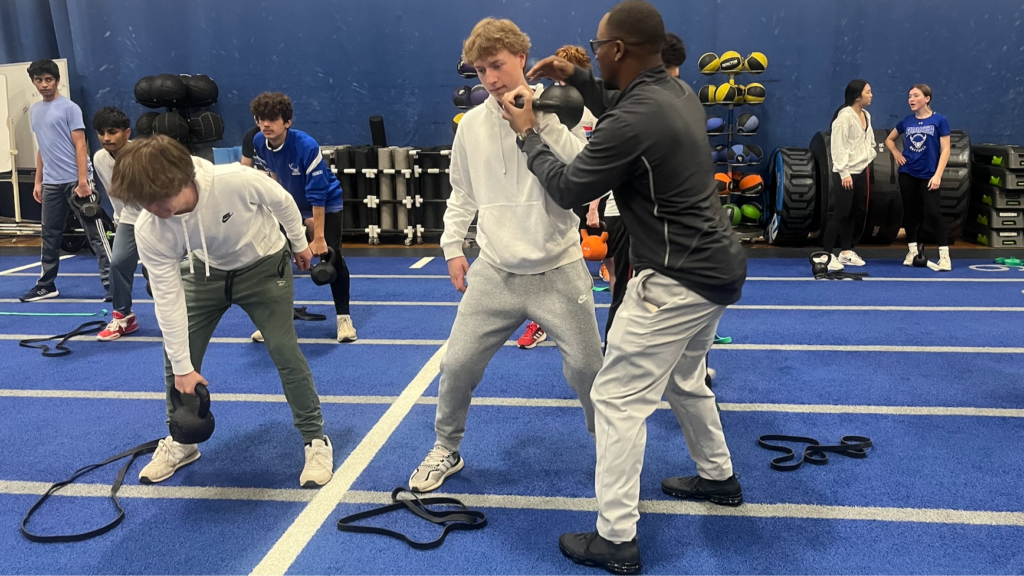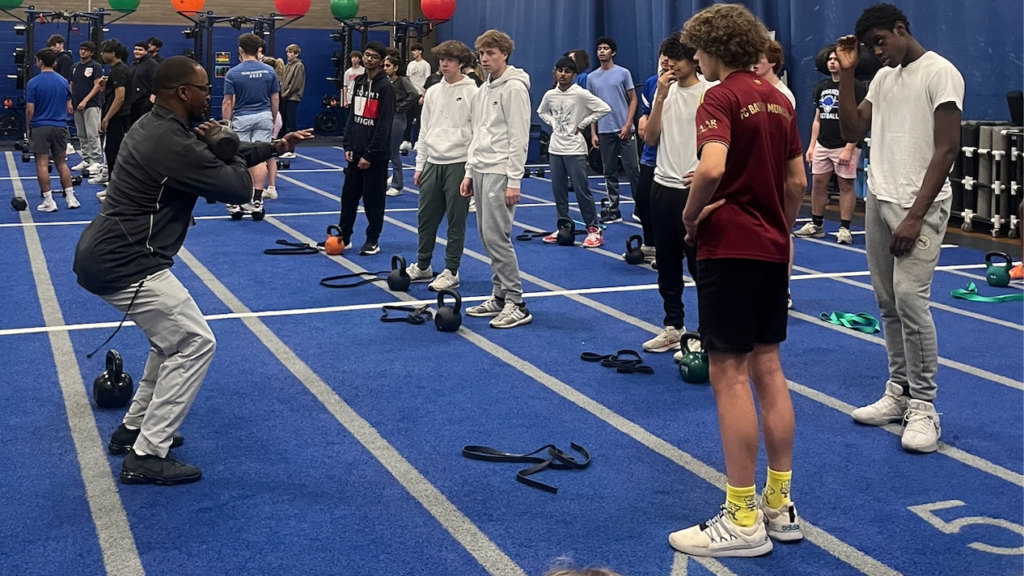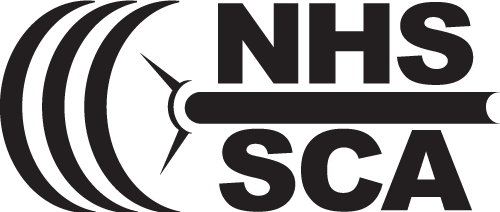By ZaQuan Irby, CFSC,IYCA-HSSCS, C-PS
Every strength coach has their unique philosophy, but there are certain fundamental elements that I believe should be a part of every program. Here’s a look at the key areas you should focus on in creating the foundation for your school’s strength and conditioning program.
These are the main elements that I began using in 2018 while establishing the strength and conditioning program at Shaker High School in Albany, New York in 2018. These remain the cornerstone of our program. Currently, over 700 students are enrolled in our Performance Fitness program.
We first prioritized spacing, class organization, and flow of exercises to ensure the athletes’ safety during their workouts. Additionally, we considered the needs of high school athletes. We believe that each strength coach should have a structured workout system in place that takes into account the safety of the athlete, the room’s layout, and the athlete’s needs. This is crucial in creating a solid foundation for the strength program.
Movement efficiency should also be a top priority. Movement should be built first and have a higher emphasis on importance from coaches than the weight a student is using during strength training. Although strength is developed through our muscular system, speed is paramount as it is a prerequisite for strength. As speed is created through the nervous system, we need to ensure that our nervous system can recruit as many motor units as possible, which will inherently make the athlete stronger. Therefore, it is necessary to focus on speed before developing strength.
Your program should include lower-level and challenging exercises allowing student-athletes to succeed. For example, we give students exercises we have already taught and add new exercises so they feel appropriately challenged to learn. This approach will help build the students’ courage and self-confidence so they feel safe to attempt challenging exercises at a higher level.
Students should be given the autonomy to make certain decisions, like selecting what implement to use or which pathway to follow, such as strength training or the recovery pathway. To provide athletes with more flexibility, they can be given the option to use either a barbell or sandbag for their hang-clean exercises.

Additionally, athletes can choose which pathway they would like to take for the next five weeks, whether it be a strength training pathway or a recovery pathway. This approach benefits both in-season and out-of-season athletes.
To achieve success, coaches must also have a plan tailored to the athletes’ needs. At my high school, we begin with fundamental bodyweight exercises and gradually progress towards more complex movements such as Olympic lifting and power training. By establishing a clear road map, coaches can ensure their athletes are prepared to reach their ultimate goals.
Every coach must have a progression and regression sheet readily available, especially in a high school where athletes may have varying skill levels. One possible exercise baseline is the trap bar squat. Progression from this exercise can be achieved by transitioning to the back squat, which places a greater demand on the spine due to the increased load. As the back squat allows for heavier loads, it can be seen as a progression from the trap bar squat.
Conversely, a regression from the trap bar squat can be as simple as performing a goblet squat. To categorize exercises, I typically divide them into seven areas:
- upper-body push
- lower-body push
- upper-body pull
- lower-body pull
- rotation
- core
- explosiveness
With these progressions and regressions or lateralization of exercises, coaches can better assist students who are struggling or need more challenge with a particular exercise.

Although not a foundation principle, it is crucial for a strength coach, regardless of their knowledge base, to build relationships with their student-athletes. If coaches cannot establish a personal connection with their athletes, they may not achieve the desired results. It is crucial to ensure that your athletes understand the academic language that underpins it.
This can be achieved by establishing a common language for all parties. Using consistent and formal language in an academic setting is crucial for effective communication. In your class, you can establish this by using specific names for exercises or movements. For instance, a straight leg kick can be referred to as a Frankenstein kick, a Tinman kick, or a straight leg kick, depending on the coach. It’s essential to ensure all students are on the same page using this academic language.
Incorporating commonly used words in performance training, like supine, prone rotation, etc., can enhance the students’ understanding and improve their performance.
At my high school, we use this language. Our performance training program includes specialized terminology such as athletic position, hip hinge, upper-body push, cardiovascular endurance, and academic language related to fitness and exercise. In teaching and having conversations with student-athletes. We also challenge students to use this language with each other in the classroom and when talking with us. We encourage students to ask questions out loud, and having students give choral responses allows students to practice this language.
It would help if coaches took the time to teach students the reasoning behind the program’s structure. This will not only help them to work harder but will also save time in the long run by ensuring that everyone is on the same page.
The ultimate goal of every strength coach is to guide and inspire young individuals to attain their aspirations and develop self-assurance, which will eventually shape them into responsible and successful adults. As coaches, we have the power to transform our communities and establish a solid foundation within our programs that can lead to more efficient use of time, energy, and resources. Additionally, we can educate students on careers from this type of training, allowing them to broaden their knowledge and interest in careers post-graduation. If you build the proper foundation for your strength and conditioning program, you will achieve these goals with your student-athletes.
ZaQuan Irby is a certified master sports performance coach and functional strength coach who serves as the director of performance at Shaker High School.


